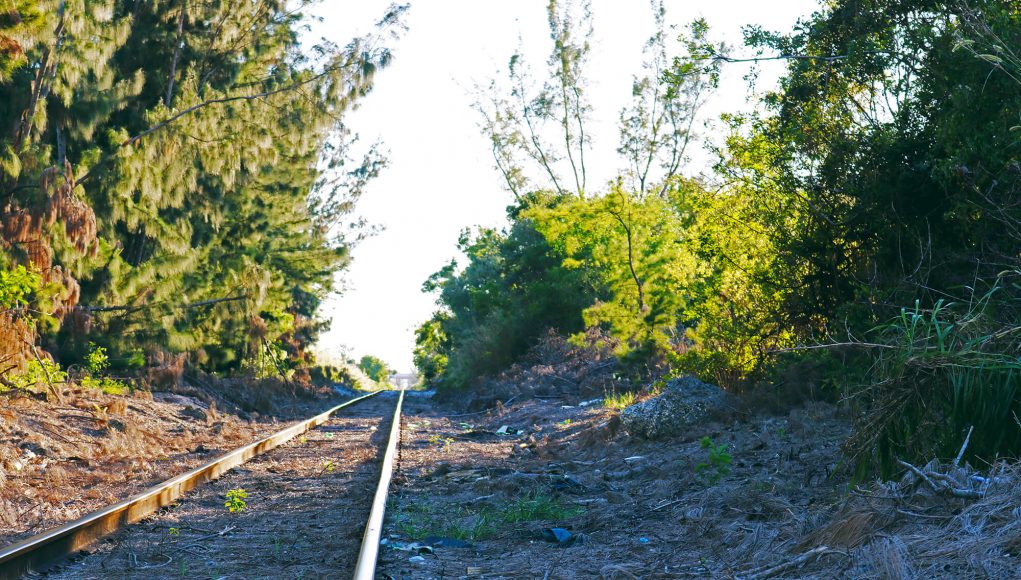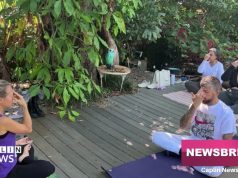State officials have earmarked $3 million to create a pedestrian and bicycle path in South Beach, part of a larger project to connect all of Miami Beach’s neighborhoods, itself part of a statewide plan for such trails.
Upon completion, the project will create an uninterrupted paved trail for pedestrians and non-motorized vehicles from South Pointe Park, located at the southernmost tip of South Beach, northward along the shore to the city limits at 87th Terrace. According to city documents, the budgeted money is part of the 2018 Shared-Used Nonmotorized Trail budget.
The trail is the first major development in the Atlantic Greenway Network, one of several unconnected trail systems in Miami-Dade County. They will be developed with funds for the SUN Trail, a long-term program launched last year to create a vast circuit of non-motorized byways throughout the state.
“This project will provide safer opportunities for bicyclists and pedestrians,” Miami Beach City Manager Jimmy Morales wrote in a letter to the mayor and city commission this summer.
To date, the greenway network is the most expensive SUN Trail-related construction in the county.
The goal of the SUN Trail, according to Florida Department of Transportation documents, is to create a connected circuit of trails throughout the state. The project is funded through a recurring $25 million annual budget derived from new vehicle registration fees.

“We are not aware of any state having something similar where it’s such a comprehensive state network with recurring funding every year,” said FDOT Chief Planner Jim Wood. “It’s many hundreds of miles and represents projects from all over the state, so it’s a large network and there is no horizon date for when it would be completed.”
Florida Greenways and Trails Foundation President Dale Allen said the idea for a large scale project began in 2011. He and members of his organization started to meet with elected officials to let them know about the multitude of unconnected regional trails built and maintained by local governments.
Their efforts at the time focused on what will become the Coast-to-Coast Connector, a corridor linking communities across the center of the state between St. Petersburg and Titusville.
Another trail, the St. Johns River-to-Sea Loop, will link communities between Titusville, St. Augustine, Palatka and DeBary, according to state documents.
“We showed them that an incredible opportunity existed [and] that if we closed seven gaps between 14 existing trails we could create, for the first time ever, a long-distance trail, completely off-road, all the way across Florida,” he said.
As the idea gained momentum, Allen said, other groups became involved and offered support, including MetroPlan Orlando, the Central Florida MPO, Bike/Walk Central Florida and the East Coast Greenway Alliance, a nonprofit organization advocating for a 3,000-mile protected biking and walking route from Florida to Maine.
“The more success we have and the more trails we put into the ground, the more valuable the project becomes,” said Paul Haydt, Florida coordinator for the ECGA. “Trails are a big part of urban redevelopment, and in Florida in particular you have a lot of the older cities that were really big in the ‘50s and ‘60s and a lot of those downtowns are now abandoned as cities sprawl. The benefits are pretty widespread.”
SUN Trail legislation received bipartisan support when it passed in 2015, according to Greenway.org. The bill was sponsored by Sen. Andy Gardiner (R-Orlando), who was serving the last year of his term.
At a reception for the Florida Greenways and Trails Foundation on Nov. 3, 2016, Gardiner said he began the process of establishing the SUN Trail knowing he would depend on others to see it completed.
“This’ll make a difference for our state,” he said in video recorded during the event posted on the front page of FGFT.org. “If you’re under 30 [and] you’re looking for where to move and raise your family, these are the types of things people will remember.”
Florida and Maine are the only two East Coast Greenway states with more than 100 miles of protected trails completed, with Florida just six miles shy of crossing the 200-mile mark, according to Greenway.org.
Allen said the investment state leaders have committed to will soon make the Sunshine State the frontrunner in alternative long-distance travel options.
“Florida is about to become the leader in the United States of this whole effort,” said Allen. “It’s nothing short of breathtaking.”































